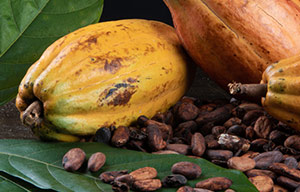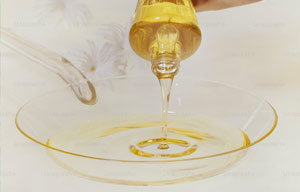Dalam kebijakan impor, Korea Selatan menerapkan beberapa landasan hukum terkait dengan perijinan masuk untuk produk makanan olahan (diluar daging, ikan ,dan unggas), seperti:
- Food Sanitation Act ditujukan untuk menjamin higienitas suatu produk secara menyeluruh, sehingga diharapakan bisa meningkatkan kualitas kesehatan masyarakat melalui kemajuan kualitatif produk pangan.
- Plant Quarantine Act ditujukan pada segala jenis tanaman, buah-buahan, sayur-sayuran untuk menghindari bahaya penyebaran hama dan penyakit yang dapat disebarkan melalui produk-produk tersebut.
- Food Labeling Law merupakan regulasi dimana produsen perlu menyertakan informasi mengenai produk makanan pada kemasan, sehingga konsumen dapat memilih produk sesuai dengan informasi tersebut.
Standardisasa produk makanan dapat dilihat pada tautan berikut (standar makanan umum dan standar makanan khusus). Untuk detail panduan impor makanan Korea Selatan, silakan lihat Law and Regulation on Food Import.
Kriteria Spesifikasi produk kakao
| Kandungan | Kriteria |
| Deskripsi | Harusmemiliki rasa turunantanpaoff-flavoratauoff-taste |
| Lead (mg/kg) | £ 2.0 (terbatasuntukcocoa powder) |
| Iodine value | 33-42 (terbatasuntukcocoa butter) |
| TidakdiijinkanTar colorant | Tidakbolehada (kecualicocoa mass, cocoa butterdancocoa powder) |
| Kandungan bacterial | £ 10.000 per sampel 1 gr (Limited to sealed chocolates and except chocolatescontaining lactic acid bacteria) |
| Lactic acid bacteria | More than labelled counts (Limited to chocolates containing lactic acid bacteria) |
Sumber: MFDS, Korea
Kriteria warna kakao yang ditetapkan oleh Korea Food and Drug Association (KFDA).
| Definition | Cacao Color is a pigment obtained by fermenting and roasting cacao beans of cacao (Theobroma cacao L.) of sterculiaceae followed by extracting with water. Its major pigment component is flavonoid. Dilutant, stabilizer, or solvent can be added for the purpose of color value adjustment and quality preservation. |
| [Compositional Specifications of Cacao Color] | |
| Content | Color value (E 10%, 1cm) of Cacao Color should be higher than the indicated value. |
| Description | Cacao Color is dark brown liquid, lump, powder, or paste with a slight characteristic scent. |
| Identification | (1) Test Solution obtained in Color Value section shows brown color. (2) 0.1 g of Cacao Color is dissolved in water to make 100 ml. When 2~3 drops of hydrochloric acid are added to 5 ml of this solution, reddish brown precipitates are formed. (3) 0.1 g of Cacao Color is dissolved in water to make 100 ml. When 2~3 drops of ferric chloride solution are added to 5 ml of this solution, it turns dark brown. |
| Purity | (1) Arsenic : 0.25 g of Cacao Color is placed in a platinum, quartz, or porcelain crucible. 10 ml of magnesium nitrate in ethyl alcohol (1→50) is added to the crucible and then alcohol is ignited. It is then reduced to ash by heating at 450∼550°. If carbonaceous substance persists, it is wetted with a small amount of nitric acid, which is further heat treated at 450∼550°. After cooling, 3 ml of hydrochloric acid is added to the residue, which is then dissolved by heating in a water bath. When test for arsenic is carried out with this test solution, it should not be more than 4ppm. (2) Heavy Metals : 1 g of Cacao Color is carbonized by heating mildly in a quartz or porcelain crucible. After cooling, add 2 ml of nitric acid and 5 drops of sulfuric acid, it is heated until white smoke disappears, which is then reduced to ash by further heating at 450∼550°. After cooling, 2 ml of hydrochloric acid is added, which is then evaporated to dryness in a water bath. 3 drops of hydrochloric acid and 10 ml of hot water are added to the resulting residue, which is then heated for 2 minutes. After cooling, 1 drop of phenolphthalein indicator solution is added, then ammonia solution is added until the color of the solution becomes pale red. The resulting solution is transferred into a Nestler cylinder by rinsing with water. Add 2 ml of diluted acetic acid (1→20) and water to make 50 ml. When this solution tested for heavy metals, the content should not be mire than 20ppm. Color standard solution is prepared by the following procedure. 2 ml of nitric acid, 5 drops of sulfuric acid, and 2 ml of hydrochloric acid are added and evaporated to dryness in a crucible that is made of the same material used for test solution preparation. 3 drops of hydrochloric acid are added to the residue, which is then transferred into another Nestler cylinder as described above. Finally, 2 ml of lead standard solution, 2 ml of diluted acetic acid (1→20), and water are added to bring the total volume to 50 ml. |
| Assay(Color Value) | Appropriate amount of Cacao Color is precisely weighed so that the absorption is within 0.3~0.7 and dissolved in water to make 100 ml. 1 ml of this solution is diluted to 100 ml with citric acid·dibasic sodium phosphate buffer solution with pH 7.0. Use this solution as the test solution. If necessary, the solution is centrifuged and the supernatant is used. Using citric acid·dibasic sodium phosphate buffer solution with pH 7.0 as a reference solution, absorption A is measured at the maximum absorption near 520nm with 1cm path length. Color value is obtained using the following equation. A × 1,000 Color Value (E 10%, 1cm) =━━━━━━━━━━━━ Weight of sample(g) ∘ Citric acid·dibasic sodium phosphate buffer solution (pH 7.0) Solution 1:0.1M citric acid solution:1L of solution containing 21.01 g of citric acid (C6H8O7·H2O). Solution 2:0.2M dibasic sodium phosphate solution: 1L of solution containing 71.63 g of dibasic sodium phosphate (Na2HPO4·12H2O). Solution 1 and Solution 2 are mixed well (35:165) and its pH is adjusted to 7.0. |
| Permitted Use Level of Cacao Color | Should not be used for the food items listed below. 1. Natural food [Natural food[meat, seafood (whale meat included), vegetables, fruits, marine algae, bean, and their simply processed food (peeled or cut)] 2. Tea 3. Hot pepper powder, red pepper powder or shredded red pepper 4. Kimchi 5. Fermented hot pepper soybean paste 6. Vinegar |
Sumber: MFDS, Korea
Standar Korea Selatan untuk Kakao
| Kode KS | Keterangan |
| O000000010 | Processed Cocoa Products or Chocolates |
| O000000011 | Cocoa Mass |
| O000000012 | Cocoa Butter |
| O000000013 | Powdered Cocoa |
| O000000014 | Misc. Processed Cocoa Products |
| O000000015 | Chocolate |
| O000000016 | Sweet Chocolate |
| O000000017 | Milk Chocolate |
| O000000018 | Family Milk Chocolate |
| O000000019 | White Chocolate |
| O000000020 | Quasi Chocolate |
| O000000021 | Processed Chocolate Products |










